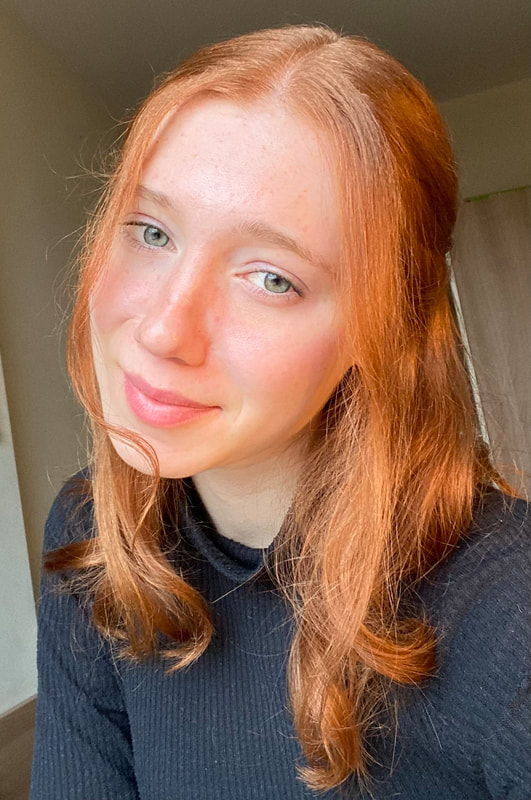How a spoonful of culture can make the pain subside : healing Rwanda through art and culture3/18/2022 100 days of genocide, 800 000 deaths and a fractured society : thinking of Rwanda’s recent history brings to mind pictures of roads strewn with bodies, skulls piled up in thousands, and blood soiling the hands of ordinary men. From April 7th to July 15th 1994, Hutu violence turned the reality of thousands of Tutsis into a living nightmare, whilst inflicting a seemingly irrevocable wound in the fabric of Rwandan society. Yet, only 30 years later, Hutus and Tutsis have learned to overcome their divisions and reinvent themselves into a nation championing development, reconciliation and reconstruction. With an economic growth rate averaging 7.2% (World Bank, 2021) and an impressively gender-equal government, many talk of Rwanda as a “metamorphosed” start-up nation, ready to build on a bright, new horizon.
Mending a post-conflict community is never an easy task, especially when the conflict in question pitted the community’s members against each other. Demanding reconciliation between the families of victims and those who brought about their deaths is a lot to ask for; yet, forgiveness is the only way forward (Hannah Arendt, 1958). So how was inter-personal forgiveness allied with memorialising the genocide? How did Rwandan society unlock itself from the burden of its past? The answer to these questions can be found by taking a closer look at the cultural practices that were rehabilitated and created in Rwanda after 1994. In fact, being at once cathartic, transformative, unifying and commemorative, culture provided a remedy to conflict by allowing Rwanda to remember, redefine, and reconcile itself after years of division and inter-communal hatred. Culture as a means of development When the genocide began in 1994, Rwanda stood amongst the 20 poorest countries in the world (World Bank). Post-conflict leaders recognised that achieving economic development was beyond essential if Rwanda wished to reach social stability and political peace. Fundamentally, they also recognised how valuable culture could be in creating jobs, increasing the country’s touristic attractiveness and boosting economic growth – converting to a creative economy, in sum, would help fortify Rwanda in the face of adversity. In fact, by 2016, Rwanda’s cultural industry represented 5.3% of its GDP, so $366.6 million in terms of state revenue (International Trade Centre, 2019). The Rwandan government has taken various initiatives to encourage the growth of this sector : subventions, development funds, fiscal arrangements… In 2015, the government even adopted a “national cultural heritage policy” aimed not only at optimising the benefits of the cultural sector, but also at highlighting Rwanda’s cultural diversity after years of tensions and divisions. In this way, culture serves a twofold purpose : developing the country economically, and unifying it around a common heritage. By way of illustration, the Kigali Genocide Memorial welcomes 75,000 tourists annually, including high representatives like George W. Bush, Tony Blair, and Ban Ki Moon (Valence Gitera, 2008). Memorialising the genocide and developing the Rwandan economy thus go hand in hand. Moreover, looking to Rwanda’s cultural heritage also provided the government with innovative (but far from novel) poverty-reduction and community-building strategies. To take an example, the government inspired itself from the “girinka” tradition to elaborate its “one cow per poor family” program. Prior to colonisation, owning a cow was a sign of wealth : giving a cow to the poorest family in each village is therefore a way to increase their social standing, whilst fighting against malnutrition through an increased consumption of dairy and meat products. What’s more, families are encouraged to offer the first female calf to another family in the village as a way of creating a prosperous circle of cooperation and friendship between neighbours, no matter their Hutu or Tutsi origins. Again, economic development intersects with personal and community development to overcome the genocide’s psycho-social legacies (National Commission Report, 2016). Renewing Rwandan culture around common values Next, genocides are possibly the strongest marker of social unease. In Rwanda, the events of 1994 pointed towards the necessity to renew society, divided by its colonial past, around common values such as mutual support, work, peace and equality. In this context , multiple measures have been taken to reanchor the Rwandan mindset in its pre-colonial culture. One example of this would be the ancestral practice of “umuganda”, which takes place on every last Sunday of the month, and requires every single citizen, including the President and police forces, to participate in collective work. Projects include the rehabilitation of infrastructure (schools, hospitals, bridges) or the protection of the environment (waste collection for example). The advantage of such initiatives is that they reunite all citizens, whether they be Hutu or Tutsi, around the reconstruction of their country, conferring upon them a sense of agency, responsibility and national pride. Furthermore, the genocide’s various demographics (survivors, perpetrators’ family members and members of the diaspora) are made to weave social relations through the dialogue and cooperation that are integral to these projects (National Commission Report, 2016). Beyond this, Rwanda’s post-conflict society has also sought an in-depth transformation of its structure as a way of insuring equality between its citizens, and taking down the barriers of ethnicity, gender and class that concurred in causing the genocide. For instance, commissions were formed to secure a more equitable access to positions of high responsibility, formerly reserved to Tutsis rather than Hutus, by overseeing the unbiased nature of exams (National Commission Report, 2016). In a similar way, much attention has been brought to gender equality, which was inscribed into the Rwandan constitution in 2003… and today, Rwanda is one of the few countries whose parliament is constituted of a majority of women (61,3% in 2021 according to the World Bank). Feminist peace theorists would applaud Rwanda, for they highlight the idea that gender-conscious societies are generally more peaceful and show a greater propensity towards the adoption of democratic governance (Hudson, et al). Shifting the cultural paradigm from inequality to equality, whether it be ethnic or gender, thus plays an important role in nurturing a peaceful Rwanda. Creating a unifying culture Finally, Rwanda also relied on the creation of an “identitary” and unifying culture. Art and culture thus become a form of catharsis, a means to express suffering and sadness, but also hope and forgiveness. This is particularly true of music, which remains a sensitive topic in Rwandan history : the “Hutu Power”’s propaganda machine had used Simon Bikindi’s songs to spread messages of hate and to induce Hutus to commit violence against Tutsis. It is in this context that singers such as Weya Viatora and Jean-Paul Samputu seek to “repair the damages caused by music through music” (France 24). For example, Samputu’s performances often foreground songs relating to the theme of genocide, whilst relying on the participation of children who lost their parents during the conflict as a way of giving them the space to express their pain and search for belonging. Hope Azeda’s projects follow a similar pathway. Being an actress and a stage director, Azeda wrote multiple theatre plays retelling the genocide and Rwanda’s story. Hutus and Tutsis participate in these plays together : through them, they cry together, learn together and grow together. Side by side, they engage in a fictive reenactment of Rwanda’s tragedy, allowing them to step out of their identities as victim, perpetrator or complacent bystander, and to step into a new role instead – that of a Rwandan citizen whose pain is neither Hutu nor Tutsi, but fundamentally human. In this way, art serves the purpose of relating people to each other, whilst reconstituting a lost sense of community (Hope Azeda TED Talk). Finally, dance, music and spirituality also morph into holistic forms of therapy and psychological support in the context of post-conflict communities. This strategy is used in particular to mend the warped mother-child relationship existing between rape victims (amounting to the number of 300,000), and the children that were born from this sexual violence. In fact, rituals involving group singing and dancing are used to remind families that these children are, above and beyond all, the “children of Rwanda”, to be loved and cherished as symbols of a brighter future, rather than repudiated and othered as remnants of the genocide. Thus, cultural practices also allow for personal liberation and collective emancipation, reconciling individuals whose relations are insanely complicated, and insanely painful (France 24). Concluding thoughts In his study on memory and history, Paul Ricoeur explained that violence, though never excusable, can nonetheless open new perspectives. Indeed, conflict often provokes a “salutary crisis” in the community affected, by questioning the structures and foundations that allowed for such violence to erupt. In Rwanda, as in many other post-conflict communities, the opportunity was seized to drastically renew society around 3 tenets : remembering the genocide, forgiving past divisions, and working towards the socio-economic edification of the country. Culture – old and new – became the roadmap of this self-transformation, shaping national consciousness, helping Rwanda’s citizens navigate their new identity and most importantly, healing the wounds left behind by 1994. A spoonful of culture can go a long way if it is deployed correctly. Bibliography https://www.youtube.com/watch?v=-on7O-5J0NU – “Rwanda, 25 years later”, France 24, 2019. https://www.youtube.com/watch?v=XN5k2MuH_Fg – “Envoyé spécial. Rwanda, a women’s country”, France 2, 18th April 2019. https://www.intracen.org/uploadedFiles/intracenorg/Content/Publications/Rwanda%20Digital%20exports_final_Low-res.pdf – “Creative Industries in Rwanda: Digital Paths to Global Markets”, International Trade Centre, 2019. https://core.ac.uk/download/pdf/148365491.pdf - “The development and promotion of heritage tourism in Rwanda”, Valence Gitera, 2008. https://www.worldbank.org/en/country/rwanda/overview#1 – World Bank Economic Overview, Oct 2021. https://www.nurc.gov.rw/fileadmin/Documents/Others/Processus_d_Unite_et_Reconciliation_au_Rwanda.pdf - Report on the “Process of Unity and Reconciliation in Rwanda” produced by the National Commission for Unity and Reconciliation, December 2016. https://www.youtube.com/watch?v=SMIgdIxBvjE – “Empathy: The only way forward”, Hope Azeda for TEDxNyarugenge, July 2021. Sex & World Peace. Valerie M. Hudson, Bonnie Ballif-Spanvill, Mary Caprioli, Chad F. Emmett. Published by Columbia University Press, Feb. 2014. The Human Condition. Hannah Arendt, 1958. Memory, history, forgetting. Paul Ricoeur, 2000.
0 Comments
|
Author
Stephanie is a History and International Relations student at the War Studies Department, King's College, London. She researched and wrote this article as part of the BizGees & War Studies Department Internship programme
|

 RSS Feed
RSS Feed

